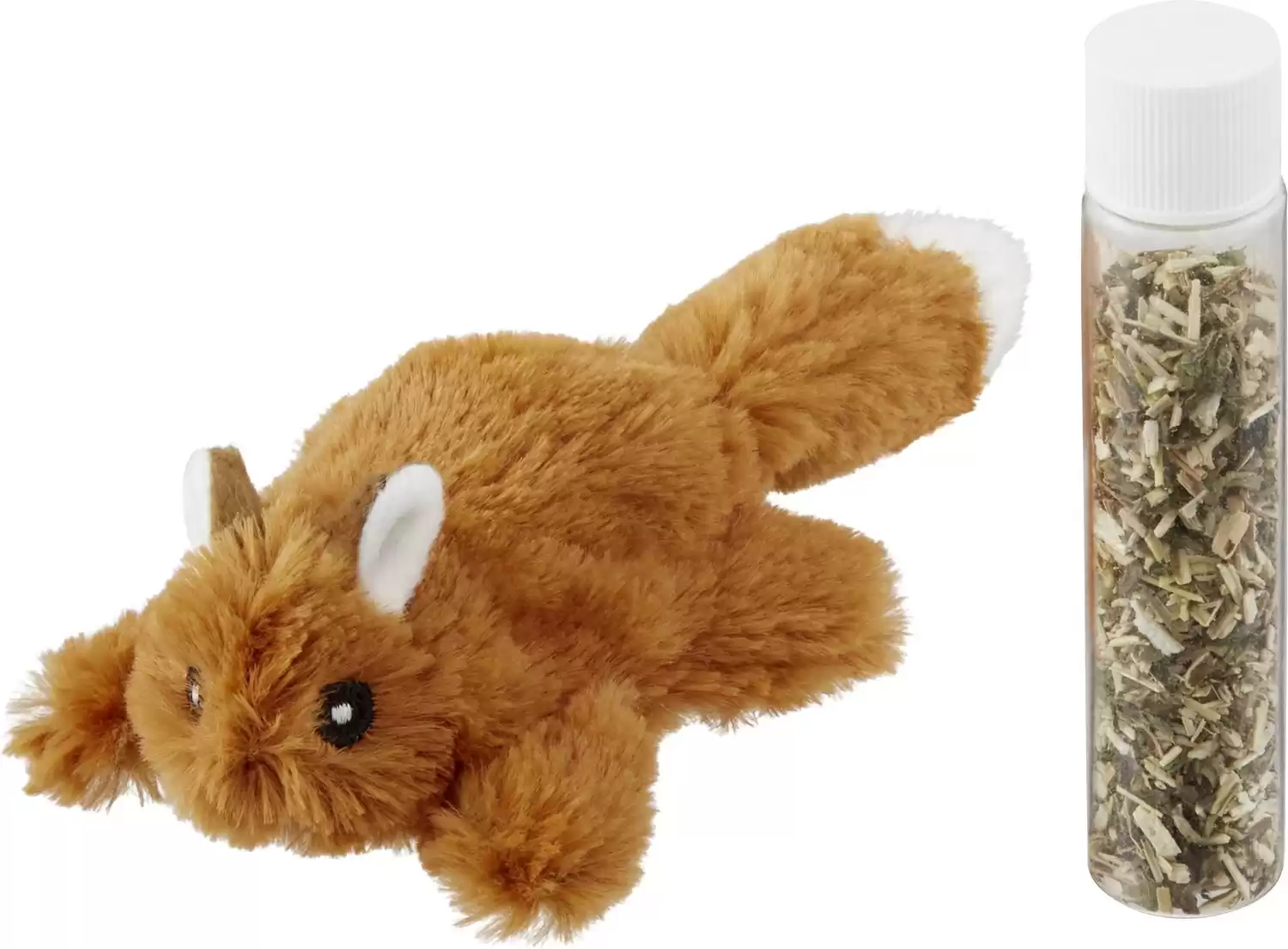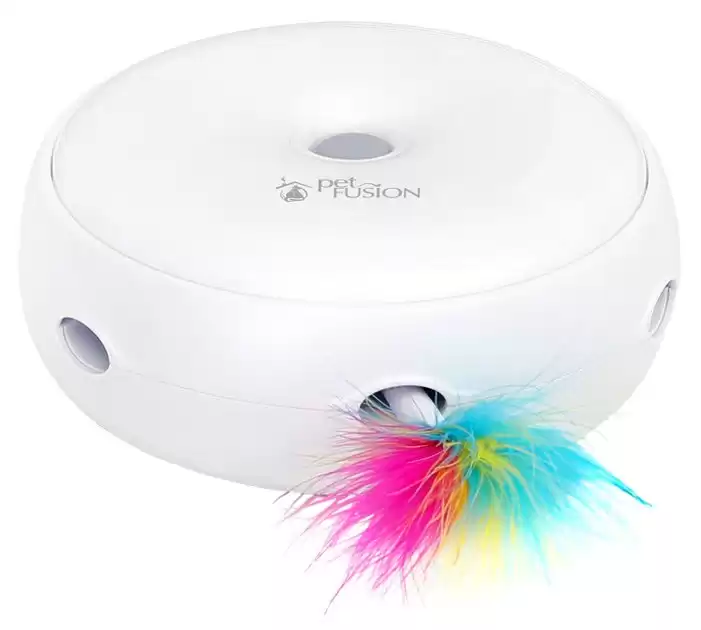Have you noticed your cat staring out the window, watching birds, and making weird, unfamiliar sounds? That unfamiliar sound that sounds like your cat’s chattering is called chirping.
This sound is different from the usual meow sound your feline friend makes. And it’s perfectly natural, as a pet owner, to wonder what’s behind the strange sound and if you should be worried or not.
The most common reason that cats chirp is to provoke prey or show excitement during a hunt. There are other reasons as well, which we will discuss in detail below.
In this article, we’ll provide answers to questions like why cats chirp, what cats chirping sounds like, and how cats make this strange sound.
Reasons Why Cats Chirp
A Way Cats Communicate
Cats are rather quiet creatures. Most are not talkative. They don’t talk much with each other either. But after years of living with humans (domestication), cats have discovered that “speaking” is the best way to communicate with their owners. It is the best way for them to get what they want.
Cats often make chirping sounds to communicate their interest and want at any moment. However, it’s difficult as a pet owner to instantly understand what your feline friend is making a fuss about. However, to get the message, you need to pay attention to other body signals.
A talk published by the Veterinary Information Network stated that cat and human communication are very similar. One reason why cats and people could get along so well is that they both rely on verbal messages and visual signals for proper communication.
A Hunting Instinct
Cats are natural hunters. Even domestication can not curb the genetic nature of the cat species. Cats often make a high-pitched, peep-like noise to express their excitement when it sees prey or smaller animals like rats or birds. Sometimes, it could be a toy or a bug that engages their hunting instincts.
When your cat chirps as a hunting instinct, you will notice the animal’s restlessness and its focus in the direction of the prey. You will likely notice your cat moving its tail back and forth, its pupil dilated, and its teeth chattering.
- Very affordable
- Features a refillable compartment for catnip
- A small container of catnip is included
- Machine-washable
Your Cat Is Frustrated
At times, cats, especially domesticated cats, make chirping noises as a result of their frustration. When you see your cat sitting by the window side and staring outside at birds or other running animals and other cats playing.
Your cat might start chirping to communicate its interest in participating and engaging in fun activities. Seeing other animals and birds outside the house and their inability to join them might frustrate them. They make chirping sounds to express their frustration.
How you would know your cat’s chirping is a show of frustration is by paying attention to what it’s staring at. Your pet would not remove its gaze from whatever interests it. If you want, you can decide to let it have some fun outside. When you do this, watch your cat burst outside, and this confirms your hypothesis.
However, if you can’t let it play outside, try distracting it by petting or playing with it using his toys.
- A colorful feather rotates and peeks out randomly from 6 different holes
- Includes a replacement feather
- Encourages hunting instincts
- Battery operated (included)
- 8-minute automatic shutdown
As a Greeting
Cats discovered the effectiveness of communication, and as an attempt to communicate and show excitement, they chirp. Some cats chirp as a form of greeting when they see other cats or humans. This shows they are delighted to see them. The chirping sound is like ‘Hi, there” in cats’ language (this is not a fact).
How you would know your cats’ are trying to greet you while chirping and not just in the hunting mode again is that your cat would not show any of the other hunting restlessness or movements.
In this case, your cat’s chirping is associated with its general excitement, not about a single prey, but about its thrill to see you. It might even get in-between your legs and rub its fur on you.
Your Cat Wants You To Play With It
A cat chirping at you is most likely seeking your attention. When you hear your feline friend chirping at you, try petting them or playing with them using their favorite toy to further make her happy.
If you do this, your cat will develop more confidence in its ability to communicate with you. And as a sequel, your feline friend might chirp more often to get your attention. This improves the bond between you and your cat.
If you want to engage a cat chirping, look for a toy that stimulates its natural hunting instinct. Playing with your feline friend with this toy helps your cat release her burst of energy or its adrenaline pump.
- Features an automatic timer
- Comes with 2 different lighting modes to amuse your cat
- Can be hung anywhere in your home
- Nice and modern design
Cat Chirp: What Does It Sound Like?
A cat chirp, also referred to as chirrup, is a short feeble sound that sounds similar to a songbird’s tweets.
Cats owners are often shocked to see their feline friend making this bird-like sound. If you’ve ever heard your cat make a similar sound, that’s your cat chirping. Oftentimes, this sound is not as loud as the regular meow sound. So it is often missed since it is not a familiar sound. However, if you pay attention to your feline friend, you’ll be able to hear this sound better when it makes it.
Dr. Wilson from The International Cat Care classified cats’ vocalization into three main categories. These include murmuring, meowing, and aggressive hissing noises. A chirp is also categorized as a type of murmuring. However, purring is a more common type of murmur sound.
Cat’s Chirping Mechanism
As stated above, cat vocalization is categorized into three. Chirping is a sound mostly made with the mouth closed.
Other big cats, such as tigers, make a similar but differently produced sound. In their case, the sound is called “Chuffing.” Big cats produce this sound by “blowing air through the nostrils with a closed mouth.” This behavior in big cats is also used as a form of greeting to other cats or as a sign of excitement.
Similarly, domesticated cats use the same technique to make a chirping sound. Chirping is mostly performed with a closed mouth, and your cat pushes air over its vocal cords.
How Do Cats Learn to Chirp?
Cats chirping is a natural behavior just like speaking is natural to humans. But both cats and humans learn this behavior as a juvenile.
Wild and domesticated cats learn to chirp in kittenhood. The mother cat, also called the queen, chirps to communicate with her kittens. And to make them pay attention and follow her. Kittens learn this language by mimicking their mother. Soon, the kittens will be able to chirp on their own.
However, some cats will chirp into adulthood as a means to communicate with you, their pet parents. But not all cats will continue chirping as adults. Some will grow up and decide not to chirp.
What Is The Difference Between a Purr and a Chirp?
Under the cat vocalization categories as stated earlier, chirping and purring sounds fall under the murmur category.
But they are different because purring is a constant sound your cat produces when air passes over its larynx as he breathes. While chirping is produced when air pushes against your cat’s vocal cords (as stated above).
Unlike chirping, which indicates your feline friend is excited or frustrated, purring is often a sign your cats make when it is contented or satisfied. Most cats make a purring sound after feeding or when they feel relaxed. But some cats also purr when they are nervous.
Is Your Cat Happy When It Chirps?
Yes. Cats are mostly joyful when they chirp. Chirping is associated with bursts of excitement for hunting or playing with you.
When your cat is enthusiastic about a toy or a bird or bug she sees, it may assume the hunting position of staying low, stalking, and approaching the object or animal for a chase.
Conversely, when your cat is attempting to greet you with its chirping sound, it often shows its excitement by jumping or headbutting. It may even run its fur or body against your legs.
All these signs are indications that your feline friend is generally happy.
Your Cat Doesn’t Chirp. Should You Be Worried?
Chirping is a natural sound cats make to show their excitement. But the fact that cats are naturally quiet creatures, as mentioned earlier, remains valid.
If your cat doesn’t chirp, and you’ve never caught or noticed your feline friend chirping, then you shouldn’t be too worried. Since both quietness and chirping are natural behaviors, it may seem that your cat decided to manifest the former.
However, if your cat has been chirping previously and you noticed that your cat doesn’t chirp as much or stopped chirping. This could be a sign something might be wrong with your feline friend.
In this case, if you notice other symptoms of weakness, lethargy, and lack of appetite. It would be best if you took your vet for further check-ups and treatment.
Conclusion
Cats are not noisy creatures, but they make different sounds to express themselves. Chirping is one of them. A sound that indicates general excitement in your feline friend.
Cats have different behaviors. Check out more posts below to find out many other interesting cats behaviors and why they do them:
The photo featured at the top of this post is © sophiecat/Shutterstock.com
Thank you for reading! Have some feedback for us? Contact the AZ Animals editorial team.











